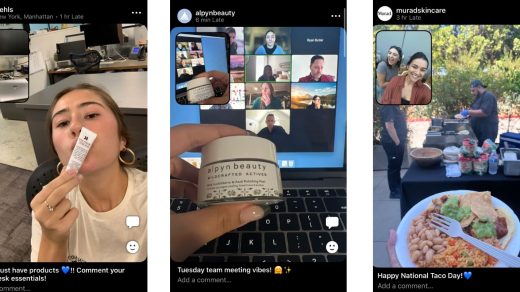I have been introduced to Polaroid cameras thanks to a game called Life is Strange. The main character, Max Caulfield, is an instant photographer who ends up gaining the ability of moving back into the past. Aside from the entire time-travel supernatural plot of the game’s plotline, what really caught my eye was Max’s camera, a Polaroid-600 type instant camera which she uses at the start of the game to take pictures. This piece of retro tech captivated me, and at that moment I knew: I needed to get my hands on one.

The only problem? The expensive price tag. The modern-day Polaroid branding is not the same Polaroid which existed in the 1970s and 80s. Instead, the current Polaroid started off as ‘The Impossible Project.’ After the original Polaroid company went bankrupt in 2008, The Impossible Project bought some of their last remaining machinery in Enschede, the Netherlands and in 2010, they started mass-production of film.
However, in this process the Polaroid film has changed: the film is thicker and uses a different chemical composition compared to the film produced prior as they had to redesign it from scratch. As such, film packs went from 10 shots per pack to only 8, and became more expensive in the process. For many, there is not really a reason to get into Polaroids, as many of us carry around a decent (or how even I would argue, better) camera in our pockets, with far more benefits than what instant photography allows. With digital photos, you can exactly see how the photo will turn out before you click the shutter button. Afterwards, these pictures can be edited, you can slap a filter on it, you can change it to be something perfect. With Polaroids though, you have none of these luxuries. Using the viewfinder and skills in framing, you click the shutter button. With the vintage cameras, you even need to set up focus and aperture yourself. Once shot, you wait half an hour for the film to develop, and whatever comes out is final – no retakes. Yet for a group of people (including me!), taking Polaroids isn’t just for the photography, it’s for the vibes it brings with it.
A Recent Experience Shooting Cosplayers
When I went to Dutch Comic Con this past summer, I made sure to stock up on film. To me, cosplay is more than half the convention experience, and as such I knew: I needed to bring my Polaroid camera with me, and be prepared to shoot – a lot. This plan quickly crumbled apart, as I realized I forgot to pack my camera in the bag as I was sitting in the train. At the start of the day, I made a few pictures of and with cosplayers on my phone, but deep in my heart I knew that this experience could be so much greater and engaging. So I set out to cure my heartache… by buying a new camera. Walking into the nearest MediaMarkt, I grabbed a combo-pack of camera and film, unboxed it at the nearest bench and within the hour I found my first two subjects to shoot. Unfortunately, considering I unboxed the camera not even half an hour prior, I was fumbling quite a bit to get it to work (I should’ve RTFM, but the problem is that it wasn’t charged). They commented “hey you could take a picture with your phone instead.” I thoroughly denied that, saying that shooting instant is a much different experience.
I don’t think that these two cosplayers were familiar with instant photography. They probably thought I just bought a fancy bulky camera and was struggling to get it to work. But when it finally worked and a physical picture rolled out of the bottom of the camera, they were in awe. I quickly explained to them how it worked, and they asked me to take another photo of them so that they can have a picture themselves, even offering me to pay them. I refused the money and gave them a picture for free instead. I don’t want to make these moments monetary, because I genuinely love the reactions I’ve seen of cosplayers. From something that was so popular in a generation before us has become so unknown to almost all. And with another picture taken and given away, I set out to hunt more cosplayers, and oh boy, the responses I got were great. From the moment of awe or interest, me explaining to it and then the responses I got at the end of the day when I sent a quick scan to everyone, it made me (and some others) quite giddy. At the end of the weekend, I returned home having shot about 25 pictures. While it was quite the pricey endeavor, it’ll be an experience I’ll never forget.
My biggest takeaway?
I just want to mention how much of a difference it is to see these moments of time coming back to life. Instead of taking photos on my phone, these become active memories which I can look at when I look at my own wall of polaroids, bringing me back to the weekend where I impulsively spent 200 euros on a camera and film. Was it one of my proudest moments? No, not really. But if I were to be brought back in time, I would do it again. Instant photography is much more than just photography for me. It’s an artform which has almost entirely disappeared, but has managed to persist. It’s a conversation starter, an unknown artefact from an age that has passed brought back to life. Or perhaps most fittingly, it’s a time machine where I, and many others, can look back through their memories, and relive a past which was worth the effort to shoot.



Recent Comments